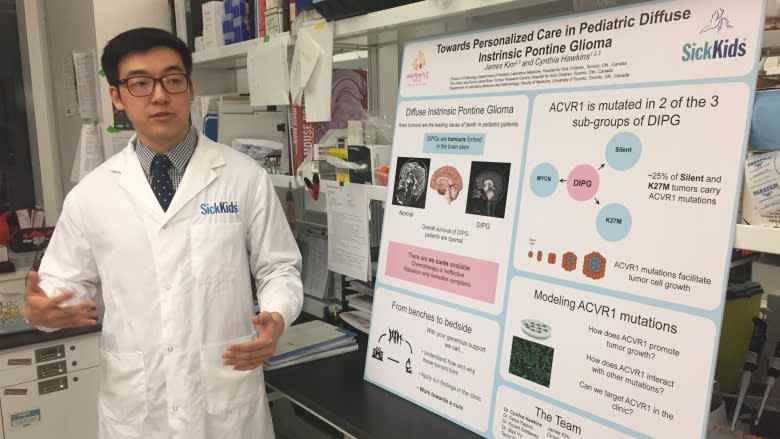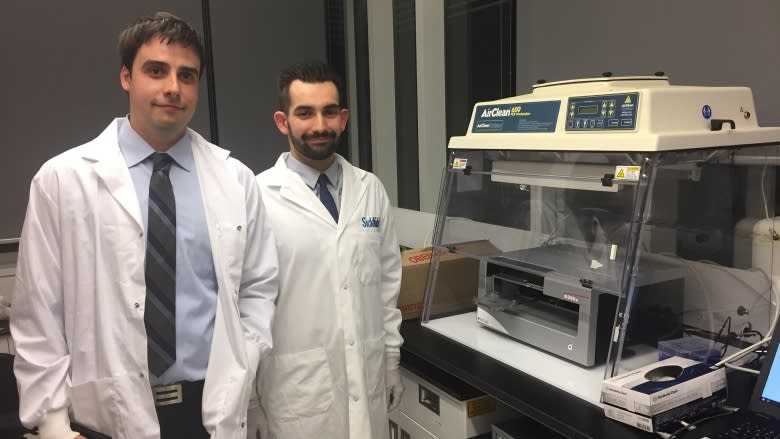SickKids shows off new equipment funded by Meagan's Walk
Ever wonder where the money a charity raises ends up?
Meagan's Walk, the annual five-kilometre walk for children's brain cancer research, held a show-and-tell session at the Labatt Brain Tumour Research Centre at the Hospital for Sick Children Thursday evening to answer that question.
Last year, the charity allocated $460,000 towards research and equipment for the world-renowned lab.
"People have been giving to our cause," said James Rutka, director of the research centre. "The vast majority of them have never seen what we do with the research money and for them to come and see how research is done at the bench is extremely important."
One of the new buys included a high-tech drug dispensing machine that distributes different types of drugs to a cancer cell sample from one patient, allowing researchers to quickly test numerous drugs to see which one might be most effective against the patient's tumour.
"The machine can speed up a drug study a thousandfold," said Andrew Bondoc, a technician at the centre. "Instead of a scientist dispensing [the drug] manually; it takes a matter of seconds."
Thirteen research proposals were funded by Meagan's Walk in 2016 — some are trying to identify the harmful cells that cause deadly brain tumours in young people.
"Brain tumours are the number one cause of cancerous deaths in children and adolescents," said Denise Bebenek, who started Meagan's Walk after her five-year-old daughter died from a brain tumour in 2001. "I started this after I saw how underfunded research was for pediatric brain tumours."
Since the first Meagan's Walk in 2002, the charity has raised $4.5 million dollars for research. Through a vetting process it decides which brain cancer projects at SickKids get funded.
The community walk happens every May. It starts at Fort York and ends with people holding hands to form a giant hug around SickKids.
"In the last 25 years we've seen some fantastic changes in the way that we look at and in the way that we understand brain tumours," said Rutka. "And many of the advances have come from this institution."



